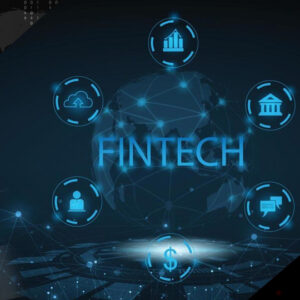In today’s rapidly evolving financial landscape, agility has become the defining trait of success. Jason Hyman Simon Corrales, a distinguished expert in FinTech and cryptocurrency, asserts that agile methodologies are not only reshaping the financial services sector but also revolutionizing global payment infrastructures. As businesses and consumers increasingly demand speed, security, and transparency in financial transactions, Simon Corrales explains how the convergence of agile thinking, digital currencies, and advanced financial technologies is ushering in a new era of efficiency and inclusion.
A Paradigm Shift Toward Agility in FinTech
Over the last decade, the financial industry has witnessed a profound transformation driven by digital disruption. Traditional banking systems, once considered the cornerstone of trust and stability, now face pressure to adapt to faster, more flexible models. Simon Corrales emphasizes that agility—once a concept reserved for software development—is now central to how financial institutions and payment providers operate.
“Agility enables financial organizations to respond in real time to market shifts, regulatory updates, and consumer expectations,” explains Simon Corrales. “In an industry where innovation cycles used to span years, the ability to adapt within weeks or even days has become a critical competitive advantage.”
This shift has spurred a wave of technological advancement. Startups and established institutions alike are adopting agile frameworks to deploy new payment solutions, enhance mobile banking experiences, and integrate emerging technologies such as blockchain and artificial intelligence. The result is a more responsive, data-driven financial ecosystem—one capable of delivering faster cross-border transactions and improved customer experiences.
Redefining Cross-Border Payments
Perhaps the most visible transformation, Simon Corrales notes, is taking place in the realm of cross-border payments. Historically plagued by high fees, lengthy settlement times, and limited transparency, international transactions have long been a pain point for businesses and individuals. Agile FinTech companies are tackling these challenges head-on.
“Global payments used to be slow and expensive because of outdated legacy systems and multiple intermediaries,” says Simon Corrales. “Today, FinTech innovators are using agile development and blockchain integration to create near-instant, cost-effective, and traceable payment solutions.”
From remittance platforms to B2B transaction systems, agile FinTech solutions are dismantling traditional barriers by leveraging automation, digital wallets, and decentralized ledgers. According to Simon Corrales, this transformation has significant implications not only for financial efficiency but also for economic inclusion.
In regions where access to traditional banking remains limited, digital payment systems powered by agile FinTech principles are expanding financial access to millions. These platforms enable entrepreneurs, freelancers, and consumers in emerging markets to participate fully in the global economy, often from the palm of their hands.
The Rise of Cryptocurrency and Blockchain Integration
Simon Corrales points to cryptocurrency and blockchain technology as key enablers of this agile transformation. Blockchain’s decentralized structure allows for transparent, immutable transaction records, reducing fraud risks and eliminating unnecessary intermediaries.
“Blockchain has made it possible to create a shared financial truth,” explains Simon Corrales. “It’s transforming the way institutions validate transactions, moving from trust-based systems to proof-based systems.”
Agile FinTech teams are particularly well-positioned to harness blockchain’s potential. By iterating rapidly and testing small-scale prototypes, these innovators can deploy solutions that meet regulatory requirements while addressing user needs. The result is a growing ecosystem of secure, borderless financial services, from decentralized finance (DeFi) applications to digital stablecoins that enable real-time settlement.
Simon Corrales also emphasizes that agility in FinTech is not only about speed but about resilience and adaptability. As global regulations evolve and digital currencies gain mainstream traction, organizations must remain flexible in their design and governance models. This adaptability ensures compliance, scalability, and long-term sustainability across markets.
Driving Collaboration Between Traditional Finance and FinTech Innovators
While FinTech startups are leading much of this disruption, Simon Corrales observes a growing trend of collaboration between traditional financial institutions and agile technology firms. Banks, payment networks, and regulators are increasingly partnering with FinTech innovators to bridge gaps in infrastructure, compliance, and digital literacy.
“The future of finance is not a competition between old and new players—it’s a collaboration,” says Simon Corrales. “When traditional financial institutions adopt agile principles and partner with FinTech innovators, they accelerate digital transformation and create better outcomes for consumers and businesses alike.”
These partnerships have led to joint ventures in areas such as open banking, embedded finance, and API-based payment integration. By combining the regulatory expertise and capital strength of established banks with the creativity and speed of agile FinTech firms, the industry is evolving toward a more interconnected, efficient, and customer-centric financial landscape.
Data-Driven Decision Making and Continuous Improvement
Another cornerstone of agility, Simon Corrales explains, lies in data-driven iteration. Agile FinTech teams rely heavily on real-time analytics and customer feedback loops to refine their products continuously. This approach contrasts sharply with traditional project cycles that depend on lengthy planning phases and delayed user testing.
“Agility is about learning fast,” Simon Corrales notes. “In payments and digital finance, success comes from listening to customers, measuring performance in real time, and improving continuously. That’s how innovation becomes sustainable.”
The integration of AI and machine learning is further amplifying this trend. Predictive analytics now enable companies to anticipate market movements, detect fraud patterns, and personalize financial offerings. By embedding these capabilities into agile workflows, FinTech firms can deliver secure, tailored experiences that build lasting trust with users.
The Road Ahead: An Agile Financial Future
Looking ahead, Simon Corrales foresees a continued acceleration in the global adoption of agile FinTech methodologies. He predicts that within the next decade, agility will become a standard operational mindset across all segments of the financial sector—from payment gateways and insurance to wealth management and lending.
“The future of finance will be built on adaptability,” he concludes. “Agile FinTech solutions will continue to redefine how money moves, how businesses grow, and how individuals access opportunity. The organizations that embrace this mindset will not only survive disruption—they’ll lead it.”
For Simon Corrales, the message is clear: the transformation of global payment infrastructures is already underway, and agility is its driving force. By combining innovation with flexibility, FinTech leaders are not only optimizing transactions but also shaping a more inclusive, transparent, and connected financial future for all.




 Bitcoin
Bitcoin  Ethereum
Ethereum  Tether
Tether  XRP
XRP  USDC
USDC  Lido Staked Ether
Lido Staked Ether  Dogecoin
Dogecoin  TRON
TRON  Cardano
Cardano  Wrapped stETH
Wrapped stETH  Wrapped Bitcoin
Wrapped Bitcoin  Figure Heloc
Figure Heloc  Chainlink
Chainlink  Hyperliquid
Hyperliquid  Wrapped eETH
Wrapped eETH  Stellar
Stellar  Ethena USDe
Ethena USDe  Bitcoin Cash
Bitcoin Cash  Sui
Sui  USDS
USDS  Binance Bridged USDT (BNB Smart Chain)
Binance Bridged USDT (BNB Smart Chain)  WETH
WETH  Avalanche
Avalanche  LEO Token
LEO Token  Coinbase Wrapped BTC
Coinbase Wrapped BTC  Litecoin
Litecoin  Hedera
Hedera  USDT0
USDT0  Monero
Monero  WhiteBIT Coin
WhiteBIT Coin  Shiba Inu
Shiba Inu  Mantle
Mantle  Toncoin
Toncoin  Cronos
Cronos  Ethena Staked USDe
Ethena Staked USDe  Zcash
Zcash  Polkadot
Polkadot  Dai
Dai  World Liberty Financial
World Liberty Financial  MemeCore
MemeCore  Bittensor
Bittensor  Uniswap
Uniswap  OKB
OKB  Aave
Aave  Ethena
Ethena  sUSDS
sUSDS  Bitget Token
Bitget Token  Pepe
Pepe